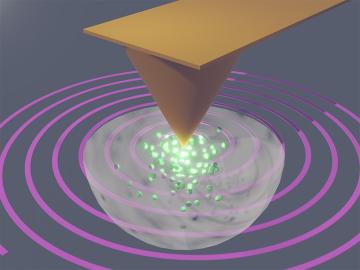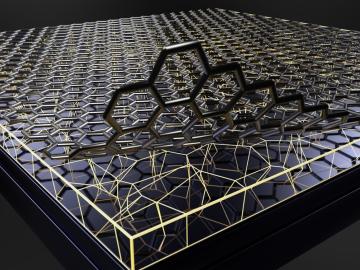Filter News
Area of Research
News Type
Date
News Topics
- 3-D Printing/Advanced Manufacturing (1)
- Artificial Intelligence (2)
- Big Data (2)
- Buildings (2)
- Chemical Sciences (1)
- Clean Water (2)
- Climate Change (4)
- Composites (1)
- Critical Materials (1)
- Decarbonization (2)
- Energy Storage (3)
- Environment (3)
- High-Performance Computing (2)
- ITER (1)
- Machine Learning (2)
- Materials (2)
- Materials Science (2)
- Neutron Science (1)
- Polymers (1)
- Simulation (2)
- Sustainable Energy (2)
- Transportation (2)
Media Contacts

Research led by ORNL’s Marti Checa and Liam Collins has pioneered a groundbreaking approach described in the journal Nature Communications that enables visualizing charge motion at the nanometer level, or one billionth of a meter, but at speeds thousands of times faster than conventional methods.

ORNL climate modeling expertise contributed to a project that assessed global emissions of ammonia from croplands now and in a warmer future, while also identifying solutions tuned to local growing conditions.

ORNL researchers have developed a novel way to encapsulate salt hydrate phase-change materials within polymer fibers through a coaxial pulling process. The discovery could lead to the widespread use of the low-carbon materials as a source of insulation for a building’s envelope.

Scientists at the Department of Energy’s Oak Ridge National Laboratory are using a new modeling framework in conjunction with data collected from marshes in the Mississippi Delta to improve predictions of climate-warming methane and nitrous oxide.

Researchers demonstrated that stainless steel and other metal alloys coated with hexagonal boron nitride, or hBN, exhibit non-stick or low-friction qualities along with improved long-term protection against harsh corrosion and high-temperature.

Electric vehicles can drive longer distances if their lithium-ion batteries deliver more energy in a lighter package. A prime weight-loss candidate is the current collector, a component that often adds 10% to the weight of a battery cell without contributing energy.








